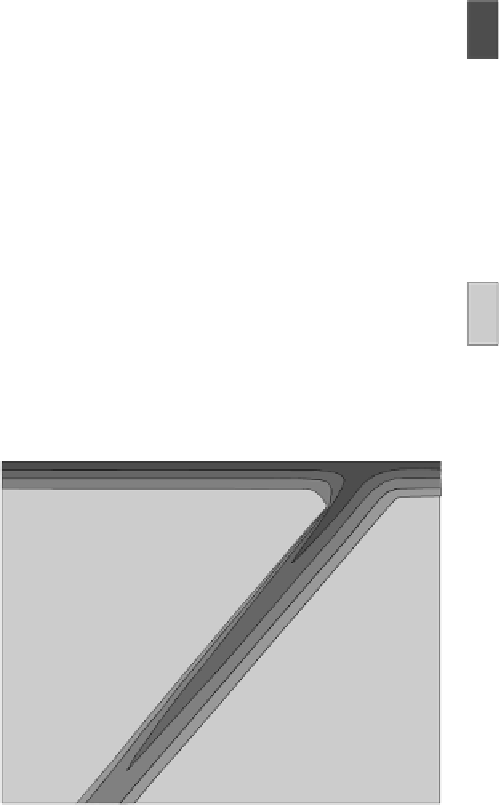Geoscience Reference
In-Depth Information
(a) Younger, slower, hotter slab
0
0
300
200
Deepest seismicity
600
900
Equilibrium
boundary
400
1200
600
1500
1800
0 200 400 600 800 1000
Distance (km)
(b)
Older, faster, colder slab
0
200
Equilibrium
boundary
400
Metastable wedge
600
Deepest seismicity
0 200 400 600 800 1000
Distance (km
)
Figure 9.44.
Thermal structure and predicted region of metastability of olivine for
lithospheric plates with (a) a low thermal parameter of 2500 km similar to the
younger and slowly subducting Aleutian slab and (b) a high thermal parameter of
17 000 km similar to the older and rapidly subducting Tonga slab. Within the
subducting plate, the equilibrium position of the olivine-spinel phase change
(dashed line) is elevated relative to the mantle. When the kinetics of the reaction are
included in the calculation, the position of the olivine-spinel phase change (solid
line) is depressed below its equilibrium position (dashed line). The thermal
parameter is the product of the plate age and its vertical rate of descent into the
mantle. The metastable wedge is present only in subduction zones that are
sufficiently cold that the olivine-spinel change takes place more slowly than the
descent of the plate. (After Stein and Stein, Thermo-mechanical evolution of oceanic
lithosphere: implications for the subduction process and deep earthquakes
(overview), 1996. Copyright 1996 American Geophysical Union. Reprinted by
permission of American Geophysical Union.)










